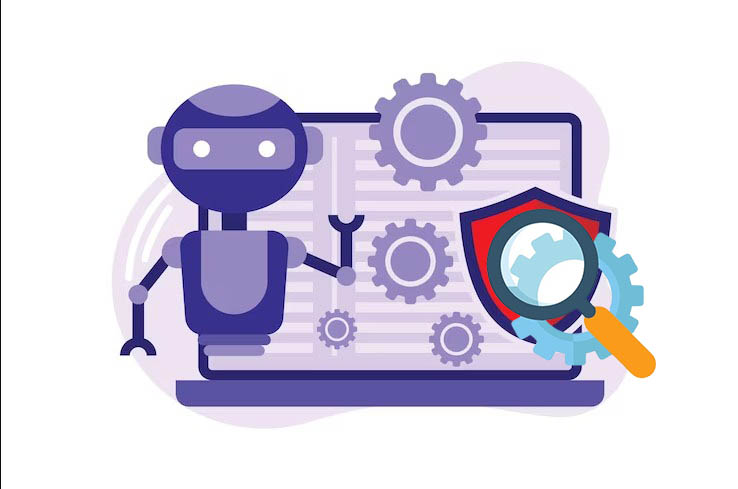Introduction: Test Procedure in SQA
The coverage of the Software quality assurance (SQA) area is a fundamental part of the software development life cycle. It guarantees that the output of the software is given by correct functionality and brings with it a good end-user experience. To SQA, however, the testing procedure is the biggest pillar that helps in the identification of faults, functionality validation and general quality of all products. In this exhaustive review, we will investigate the basic elements of the test procedure, its stages, methodologies, and the tools used to guarantee software quality assurance.
What is the so-called Test Procedure?
The testing process is a thorough and scientific user manual that evaluates these functions from the software functionality, performance as well as reliability. It includes a continuous process beginning with the goal of the software to confirm that the program functions by the presupposed rules and specifications. Let’s break down the essential aspects of the test procedure:
1. Requirement Analysis:
Initially, the QA testing service team has to deeply analyze the project requirements before any testing starts. This includes both functional and nonfunctional parts of a software and their interrelations is taken into consideration. A major role of SQA specialists is to team up early in the process of requirement gathering as this way one avoids misunderstandings, strikes a balance between the user and business expectations, as well as identifies risks. Clear specifications act as the base for the creation of efficient test cases.
2. Test Planning:
In the test organization phase, SQA engineers form a complete trial plan for checking. This involves defining the boundaries of testing, identifying the type of testing for instance, regression testing, functional testing, and performance testing, as well as establishing allocated resources. Test planning also includes the selection of the main priorities, the estimation of the effort and the definition of the testing environment. A test plan that is properly structured will save on time during testing with the bug reports happening properly.
3. Test Design:
Test design refers to the creation of detailed functional and non-functional test cases that are derived from requirements. SQA experts make positive and negative storylines to test the software in different dimensions. Test cases target functional flows, edge conditions, mistake patterns and usability.
Besides, test design also consists of creating test data, selecting the most suitable UX testing advanced techniques (such as equivalence partitioning or boundary value analysis) and ensuring test coverage.
4. Test Execution and Defect Reporting
Test execution is another core activity in QA where testing engineers perform the test cases and record the response of the software. They see if actual results are in line with expected results, and once they detect any uncorrection of that — they report it as defects. The process of reporting defects is done by capturing the relevant information (like the steps to reproduce, screenshots and logs) and then classifying the defects according to their severity and priority. Quality assurance (QA) and the programming team must maintain effective communication to this point.
5. Re-tests and Regression Tests
Once bugs are eliminated, SQA sends its experts for re-testing, to see if the problems have been resolved as expected. Moreover, regression tests help to avoid the case where new changes will affect the existing functionality. Regression test sets consist of the test cases that cover the essential areas of the application, hence they are used to avoid the side effects that are not intended. Automation puts forward a crucial element in conducting regression tests in an automated way.
6. Release Tests:
Before the release of the software, the SQA performs comprehensive release tests. The tests validate the whole way of the system not only for integration points and load performance but also for the response to pen testing, security vulnerabilities, and compliance with different browsers and devices. It is about having complete software, which is stable, reliable and ready for the market.
Test Automation as an Aspect of the SQA.
Automation of testing is at all stages of the implementation of SQA. It is the way of using tools and scripts for rounds and round to run test cases automatically. Here are the key approaches to testing within SQA:
1. Manual Testing:
Manual test is the process of a human tester by the time o which he follows the specified test cases step by step by using one of the two methods i-e predefined test script and exploratory ways.
The testers are in constant communication with the software interface, the data input and the system behavior.
Manual testing is mainly used in cases where human knowledge (like instinct and creativity) is the key factor that has to be launched successfully.(whereas the usability testing and the test were used for quantitative assessment, the exploratory testing was used to determine the quality of usage).
Advantages:
Exploratory Testing: A human being, who runs unit testing, plays several roles, including he can check the application for lots of unexpected issues, and he can also give useful feedback.
Usability Assessment: The research of user experience, accessibility, and the design of user interfaces demands human judgment.
Early Detection of Usability Issues: By finding use-related bugs that would have been bypassed by both automated rules and humans, testers are in a position to do difficult work.
Challenges:
Time-Consuming: Nevertheless, manual testing is, as a rule, burdening as it is both slow down and tiresome during repetitive tasks.
Human Error: It is the testers who are the ones to skim the steps or the ones to miss the bugs.
Resource-Intensive: Many things are looked at by the software tester that makes the testing job more complex; the skilled person in the field is a key player in this and there is a need to put so much effort into the process.
2. Automated Testing:
The mechanics of the automation quiping are also software-driven in the sense that the scripts and applications can be used to run the tests and also for the in-house applications.
Test scripts are used to simulate the interaction of a user, to verify the functionality and to compare the actual results with the expected outcomes.
The test automation market is booming and many tools, including Selenium, TestNG, JUnit, and TestComplete, exist already.
Advantages:
Efficiency: Automating tests increase their speed and therefore, with every automated test, you can cover more testing grounds as compared to the period before automation was introduced.
Repeatability: One of the noteworthy aspects is uniformity which established the standard test to give a constant result each time.
Regression Testing: Regression scripts pinpoint the problems due to the change of the source code automatically.
Coverage: Automation enables the testing of an indefinite multitude of specific cases that can be both improbable and canonical.
Challenges:
Initial Setup: The recurring work of cooking up and watching over a test script is the next step that you will go through.
Maintenance Overhead: Sadly, the updates of the application will introduce new test scripts to the table.
Limited Creativity: Scenario usually when a tester intends to so all things per plan and may miss to spot a mistake.
Not Suitable for All Scenarios: Usability assessment remains one of the components that an experimenter manually evaluates.
The process of SQA implementation is so much needed
Implementing a robust SQA process is essential for several reasons: A SQA process is so important because of some reasons: 1) it guarantees the product’s quality.
Risk Mitigation:
Meanwhile, improvement in both hardware and AI allows the quality assurance teams to predict risks and mitigate them by the production stage.
The testing stage of the project is the time when we identify and correct critical defects that may otherwise end up in the production phase.
Cost Savings:
Identifying flaws that can be repaired in the design or quality testing process is considerably cheaper than those that escape the process to become noticeable to buyers.
SQA procedures are those actions that save the companies from the costly solution of latent mistakes after the release.
Enhanced User Satisfaction:
The software of the highest quality, is what ensures the best user experience.
These help form customers an overall good opinion about a product, and therefore they are motivated to develop a closer relationship.
Improved Collaboration:
The QA approaches represent the collaborative picture of the parties that are involved – implementation, testing, and business divisions.
The clear communication makes the project objectives easy to understand.
Eventually, manual testers will be key in bringing together the mix of coverages, reliability and usability while automated testing will be utilized to drive testing through coverage and efficiency.
Should there be performance testing or just compliance checking?
Many devices are applied to ensure the quality of the quality assurance testing. In addition to these, Testsigma is fully developed and equipped with tools such as automated testing, management of tests, and continuous testing. It performs all the tasks that QA teams used to waste their time such as test development, execution and maintenance, for example. The QA team can now work on more complex, creative tasks that help deliver the software.
Conclusion:
In conclusion, the SQA test process is a successful one since it makes sure that the software products meet the quality standards, fulfill the requirements, and add value to the users. Incorporation of quality assurance during project development, through effective testing procedures as well as the automated mobile app testing tools, ultimately enables the product of software to be out sooner.



